Homes Away From Home
By Giulia Roy | April 16, 2023

Momentum is everything in basketball. It fuels team confidence, puts the opposing team on the back foot, and often contributes to game-deciding runs. Fans at basketball games are more than spectators. They have the ability to drive momentum. In fact, fans are often said to be the “sixth man” on the court. As any basketball player will tell you, having the whole crowd behind a team is both exhilarating and motivating. It’s no wonder that teams fight so hard to get home court advantage during the playoffs, since playing at home means having the fans’ backing. However, the fans’ support depends heavily on the crowd size. Professional women’s basketball has suffered in this department for several years. Sadly, the average number of people in attendance at WNBA games has been on a relatively constant decline since the creation of the league in 1997. As the graph below shows, average per game fan attendance was in the 10,000’s in the earliest years of the league but has not been anywhere near that high since. Of course, the pandemic has severely worsened this issue, so the current numbers look far worse than they did before 2020.
As fan attendance continues to rebound, the question remains: Has decreasing fan attendance in the WNBA affected home court advantage? This question is hard to answer as team performance is based on so much more than the home crowd. However, it is possible to see if there is an association between average home game attendance and home win percentage. To eliminate the drastic changes that followed the pandemic, I focused on the years from 1997 through 2019. In addition, to avoid any confounding variables that would arise from team and location changes, I only analyzed trends for the current WNBA teams. I also chose to leave out the Las Vegas Aces and Dallas Wings since they have very few seasons under their belt, and therefore not enough data points to do meaningful analysis on.
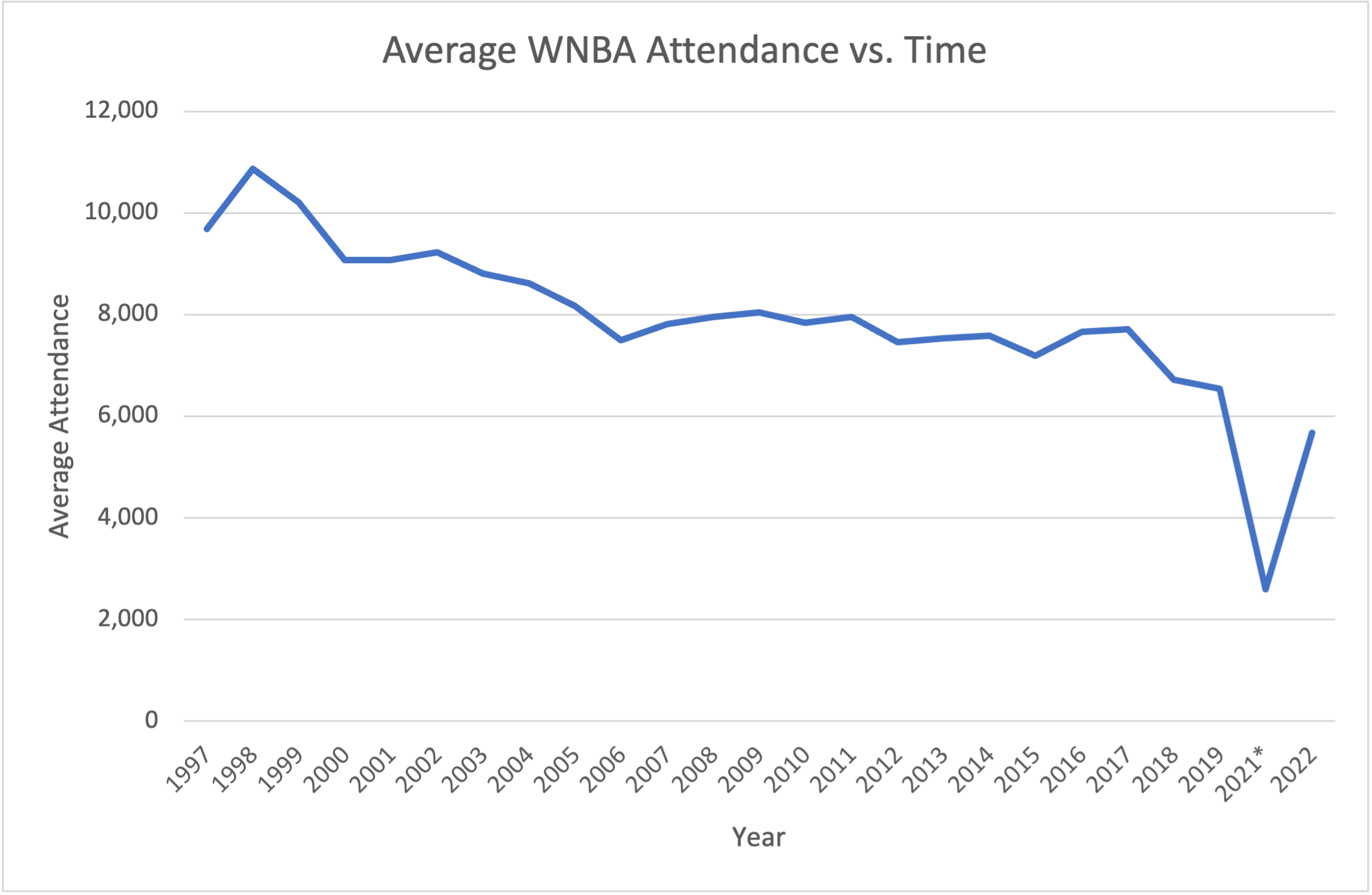
The correlation between average home game attendance and home win percentage varied quite a bit across current WNBA teams. Teams like the Seattle Storm, Connecticut Sun, New York Liberty, and Minnesota Lynx showed a strong positive linear relationship between average fan attendance and home win percentage. As their line graphs show below, the home court win percentage trends closely mirror those for fan attendance.
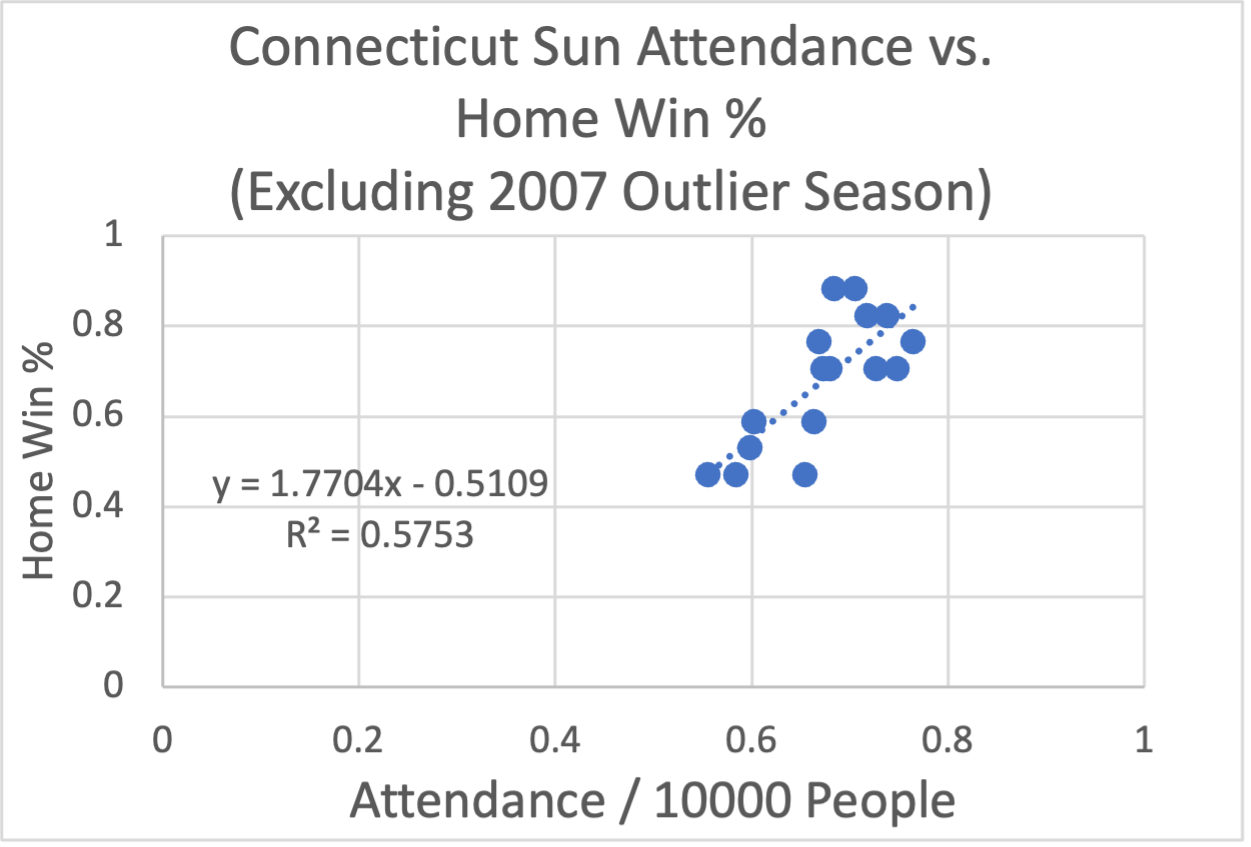
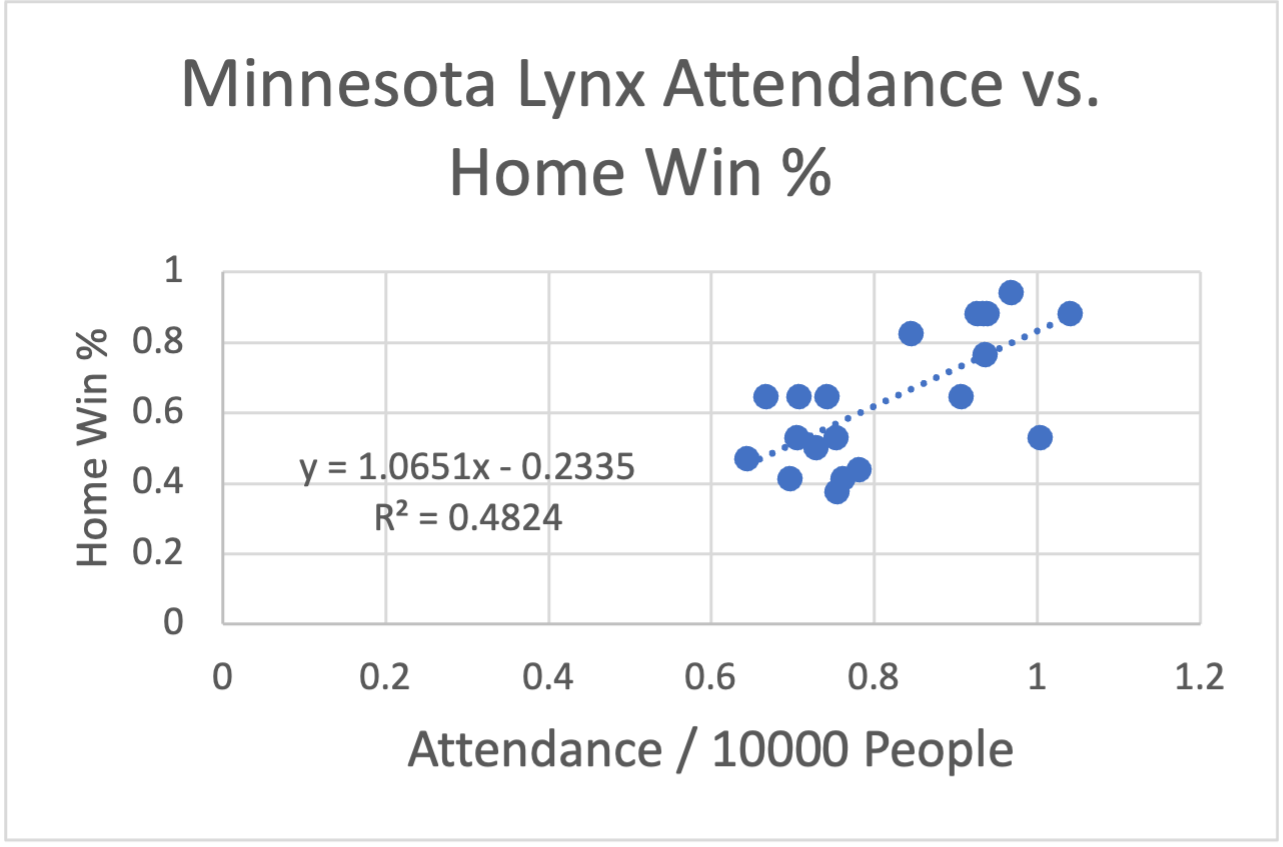
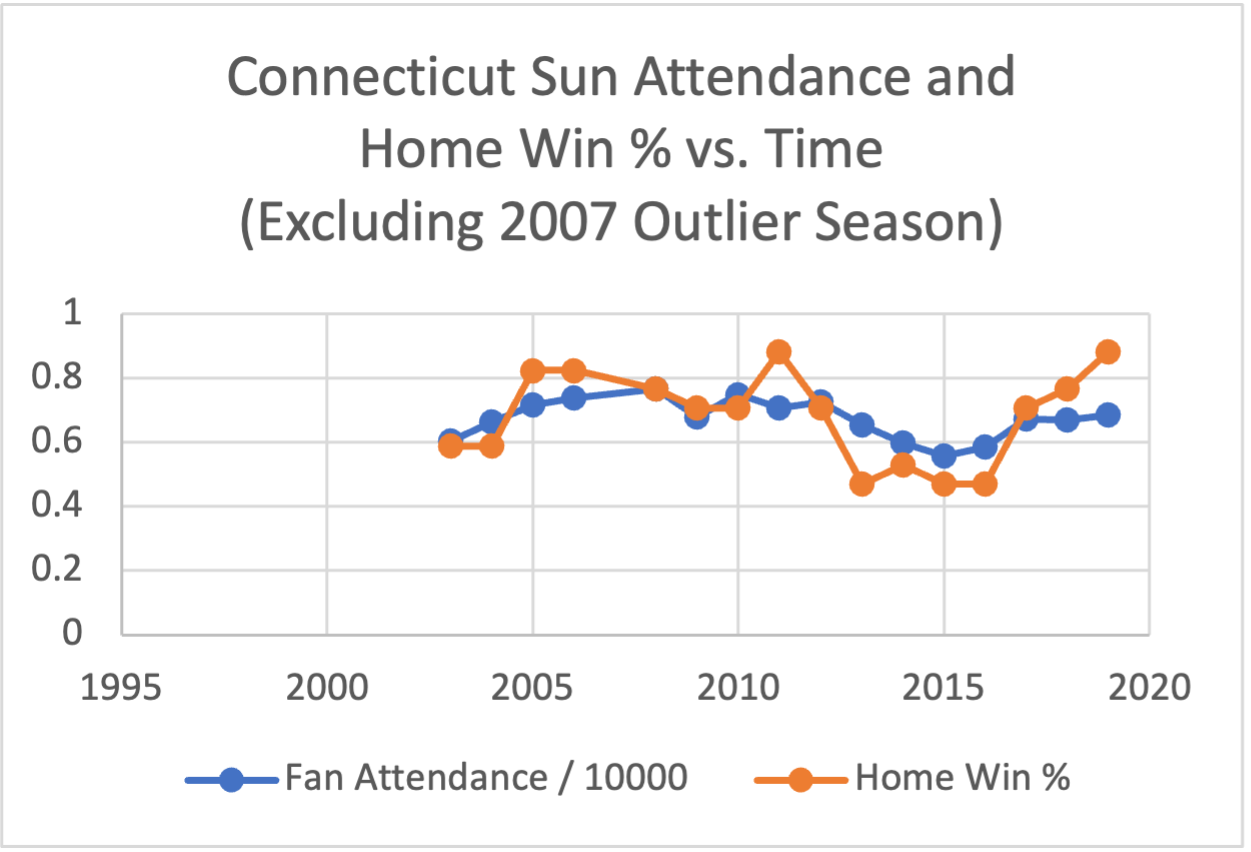
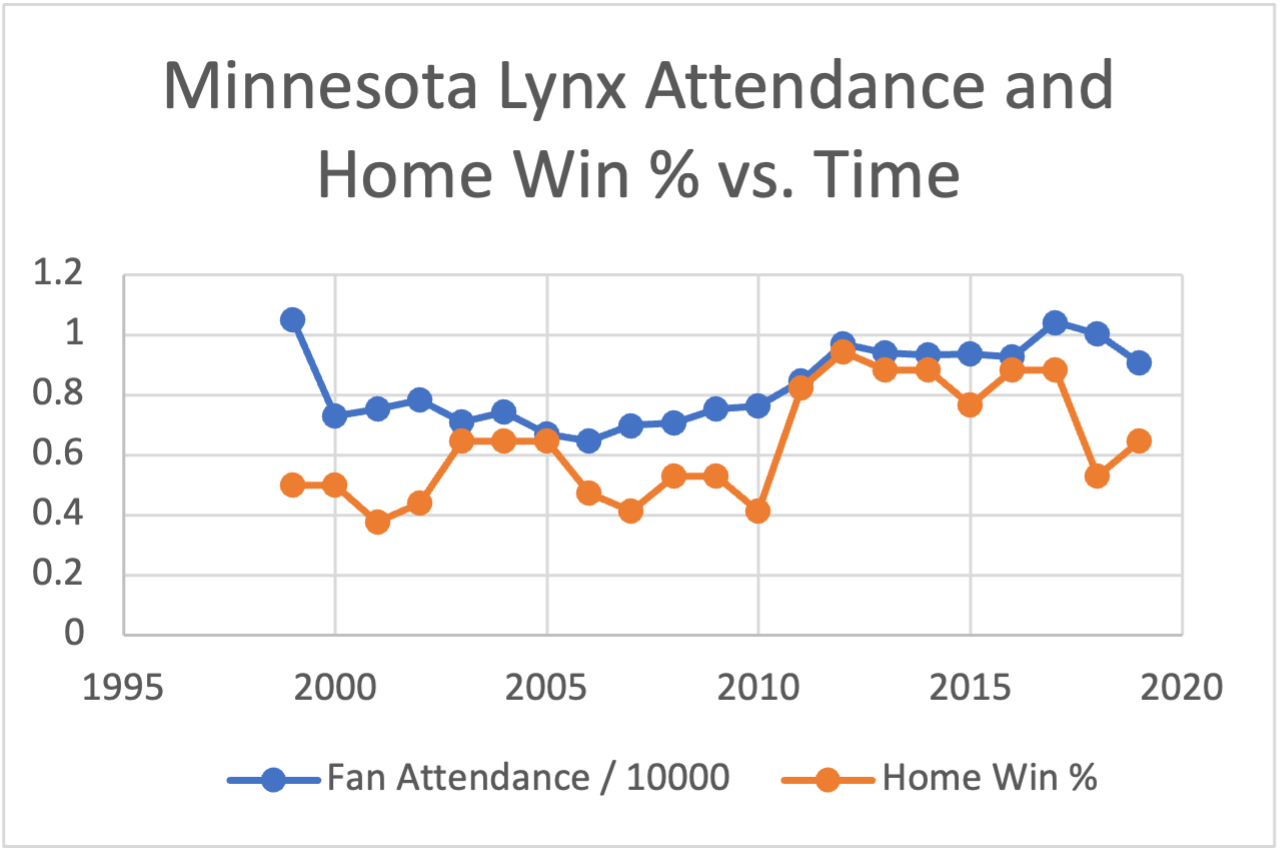
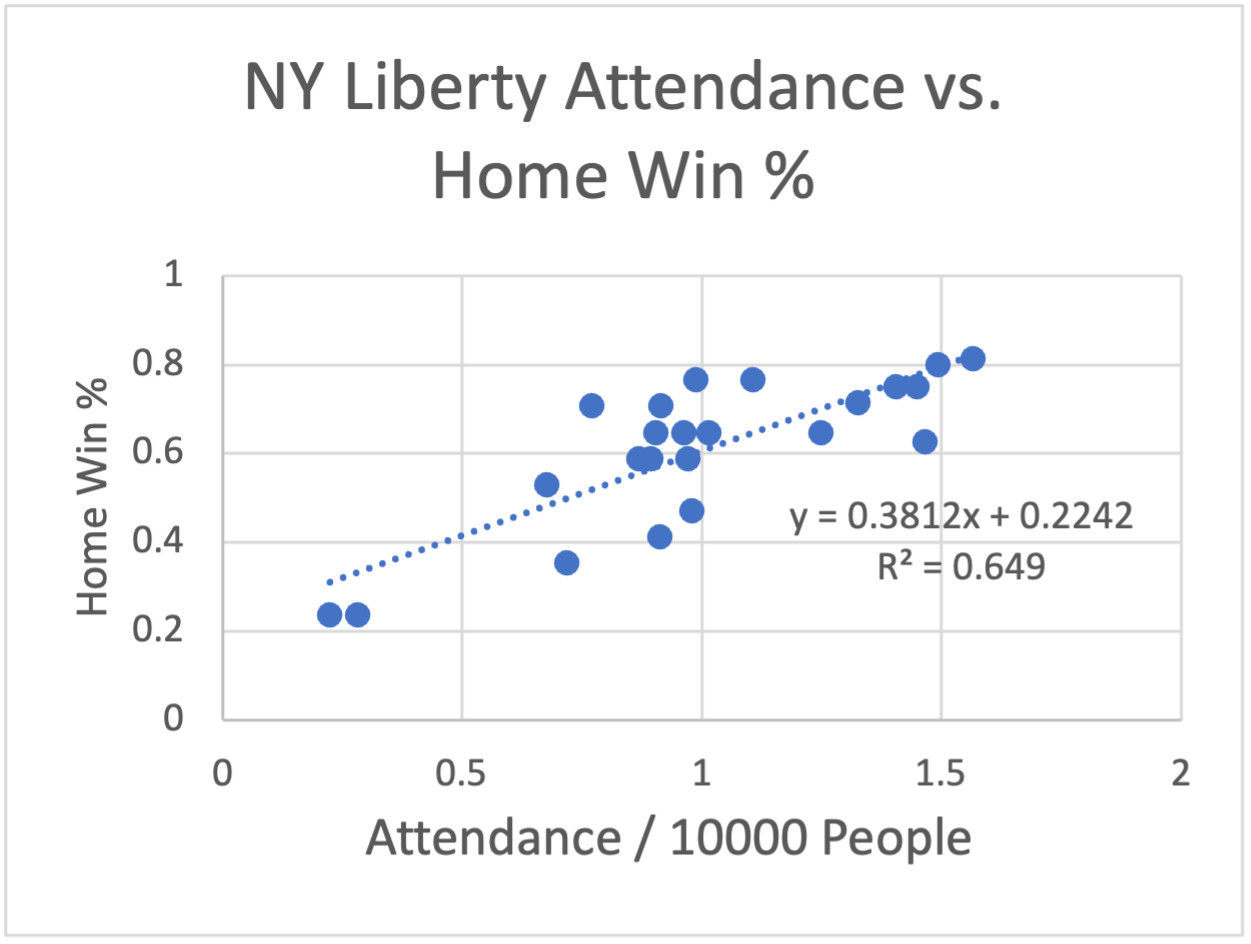
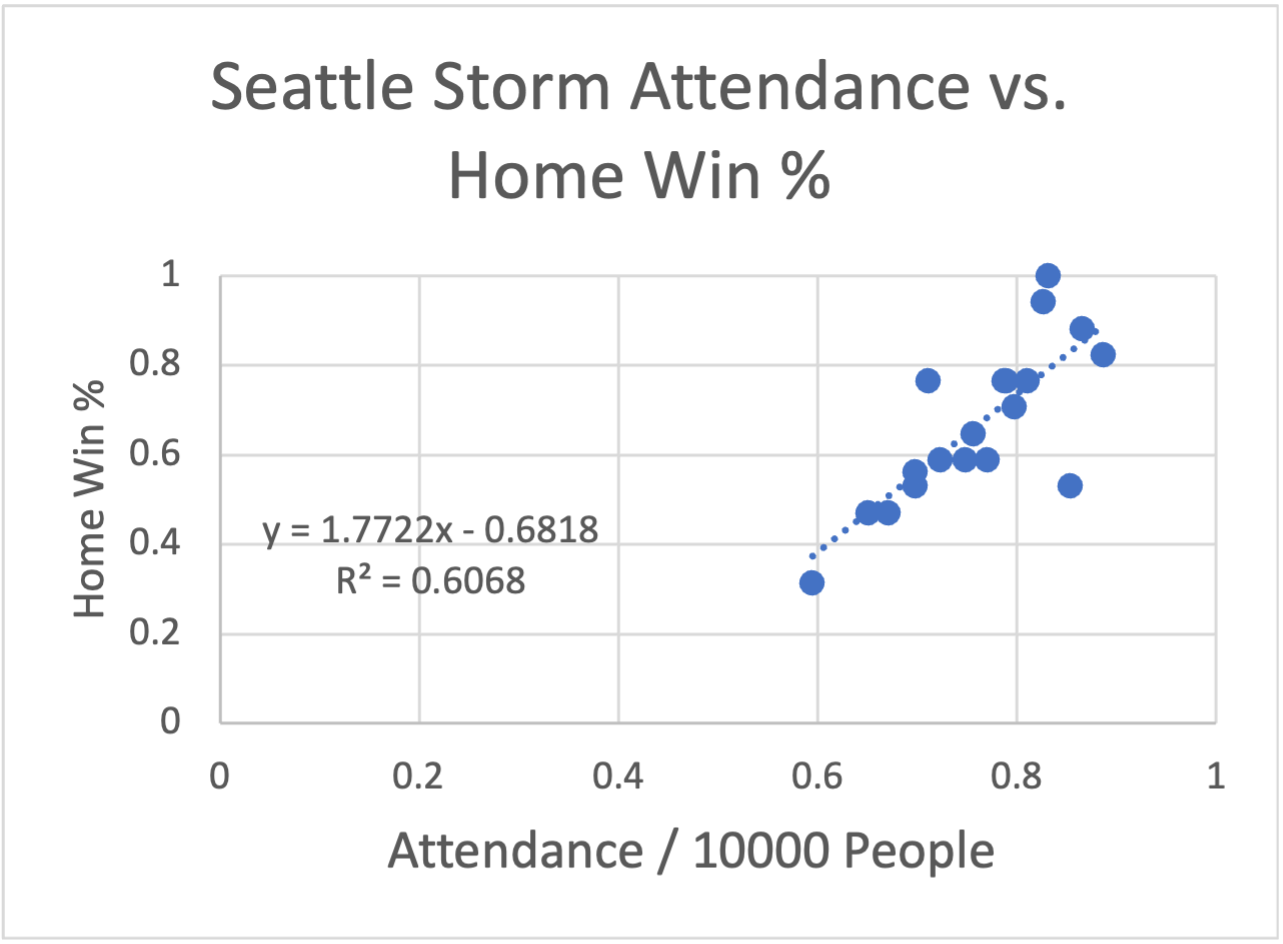
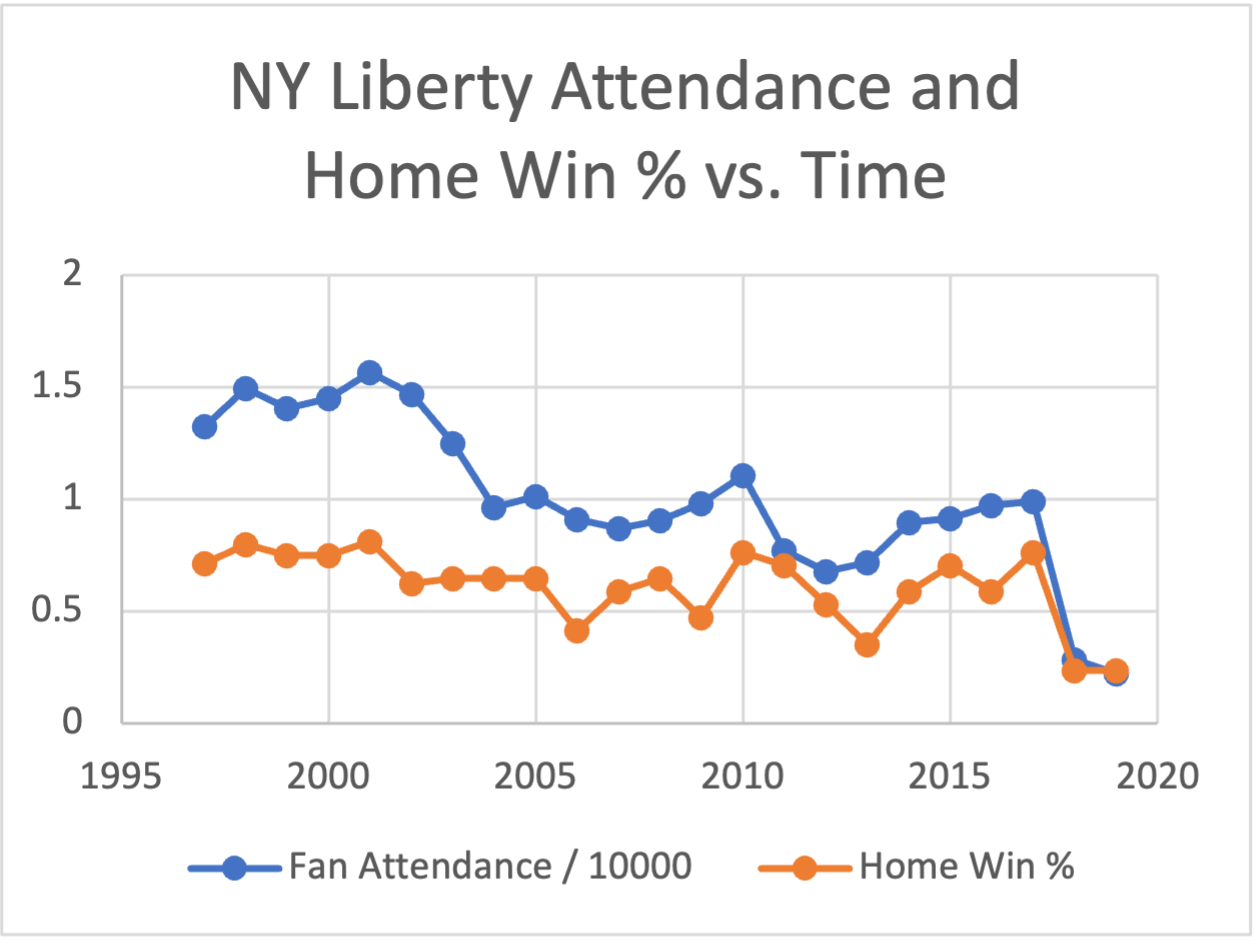
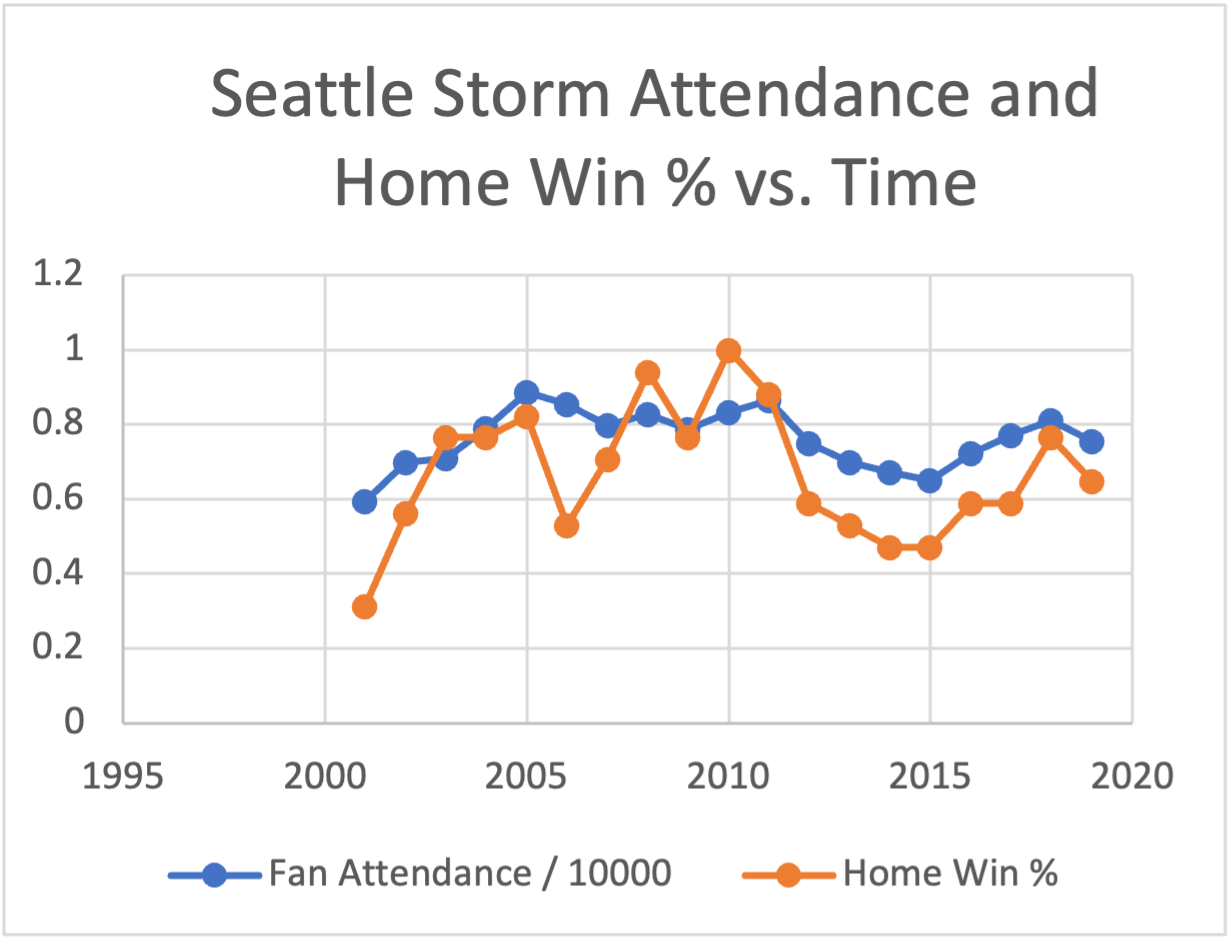
However other teams such as the Phoenix Mercury, Atlanta Dream, Indiana Fever, Los Angeles Sparks, and Chicago Sky showed a fairly weak positive linear relationship between the two variables. In the case of the Washington Mystics, there was a weak, negative linear relationship. This indicates that as average fan attendance increased, home win percentage decreased, and vice versa.
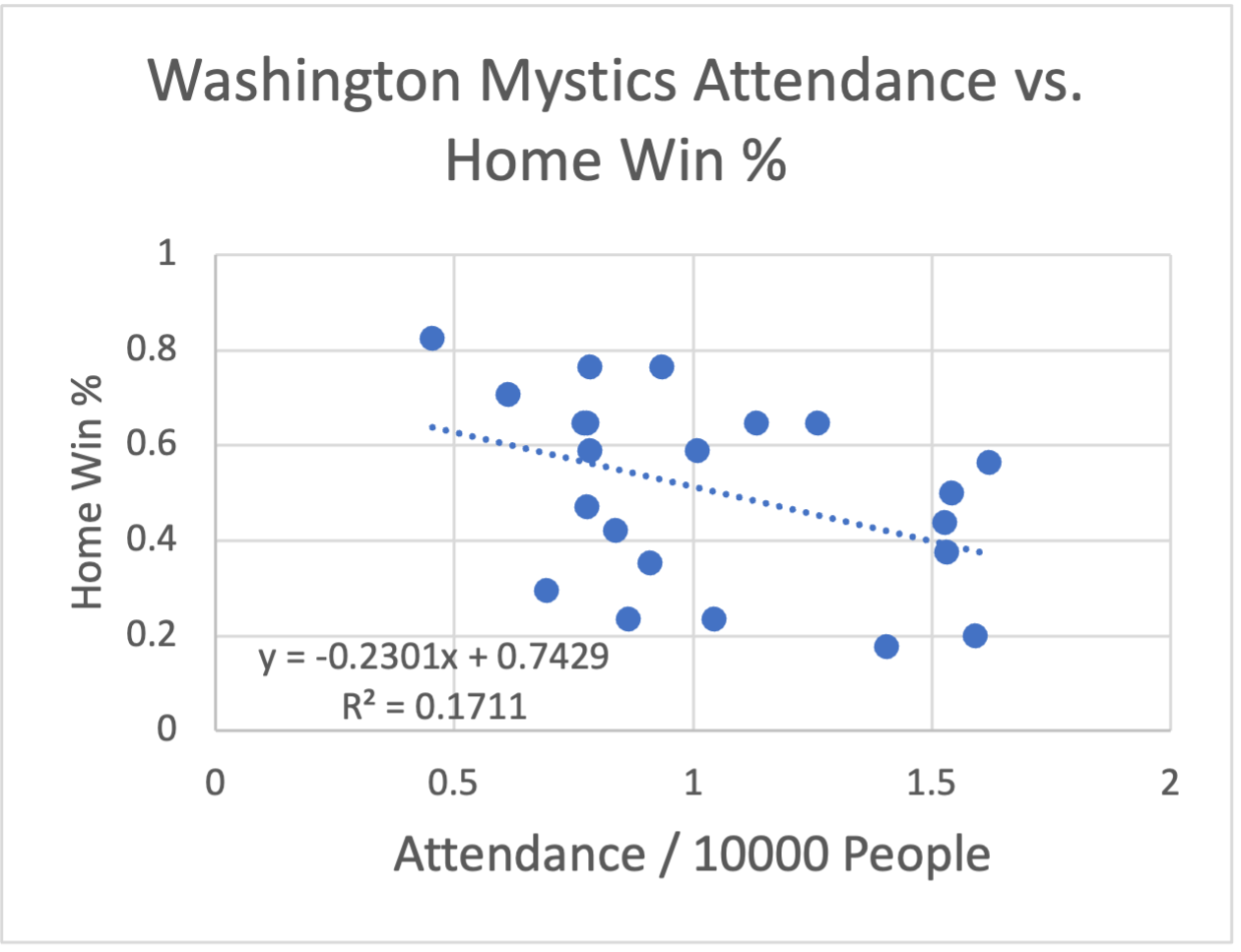
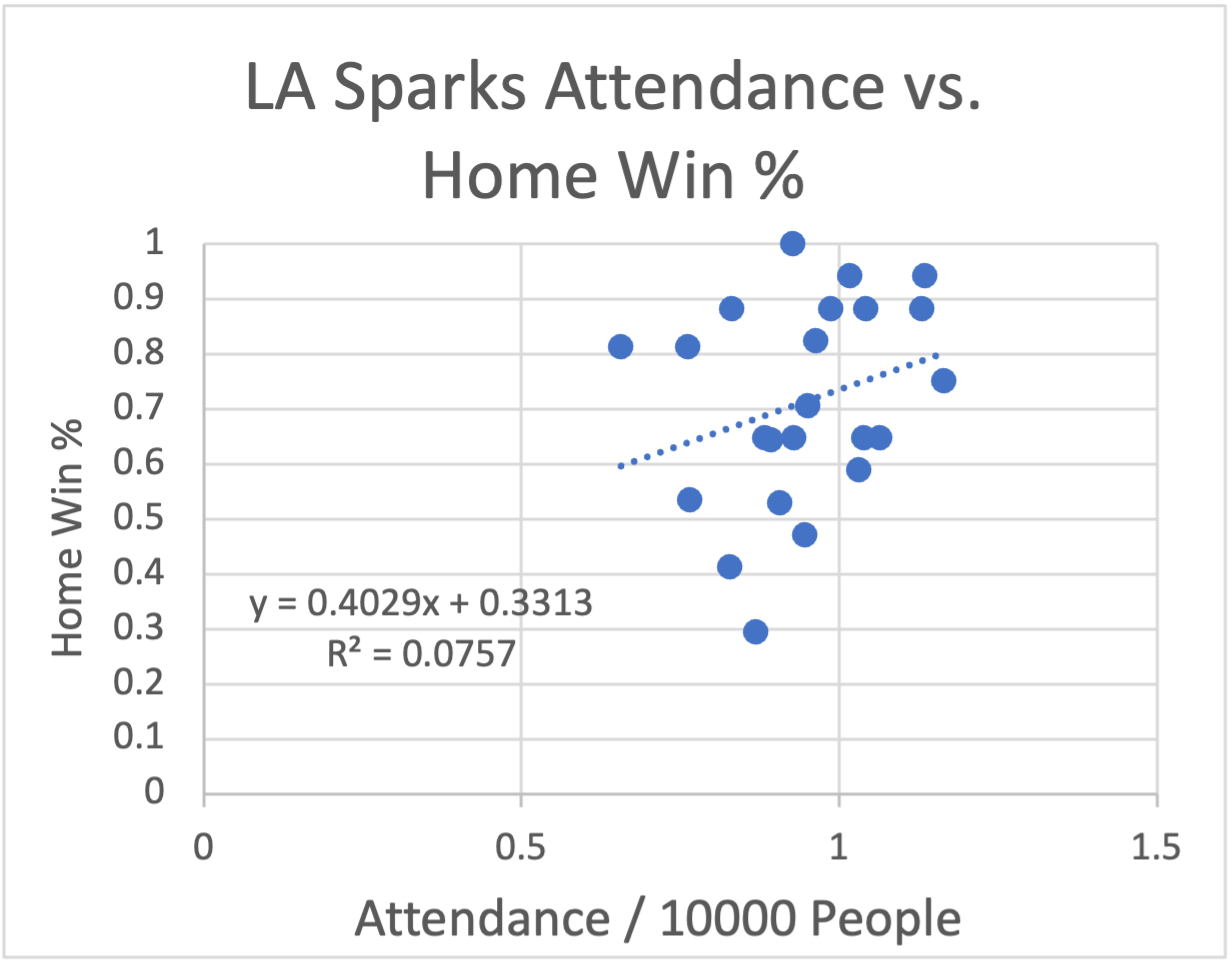
The variety of linear correlation between average WNBA home game attendance and home win percentage across teams is a testament to the difficulty in identifying if decreasing fan attendance has had a notable effect on home court advantage. The reality is that factors like superstar players and team chemistry play a much more dominant role in how a team does at home. That is not to say that the fans and the size of the crowd do not play a side role as well. In fact, superstar players and crowd size often go hand in hand. Players like Breanna Stewart bring both home wins and fans. At the very least however, the New York Liberty and Seattle Storm have shown that for some mainstream WNBA franchises, there is an association between average fan attendance and home win percentage. Regardless of how crowd size affects home court advantage, there is no doubt that the more fans there are at professional basketball games, the more fun it is. As women’s basketball gains more and more traction, it is my hope that fans will show up for their home teams, and bring the same level of support that they offer to NBA teams.





